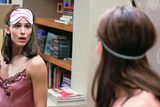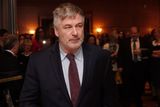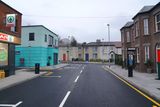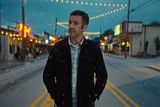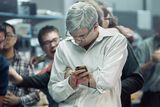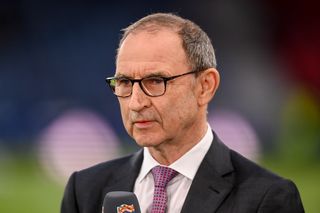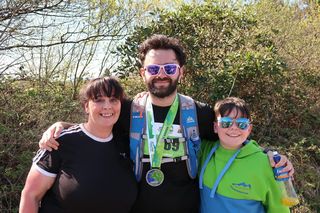The world watched as we helped bury JFK
Summoned from their Curragh barracks, 26 teenage Irish cadets formed the guard of honour at President Kennedy's funeral; 45 years later, they retrace their steps. By Clodagh Finn
Colonel William Nott on a bus with his fellow cadets
The Irish army's 37th cadet class might not remember where they were when John F Kennedy was shot, but they have a vivid memory of where they were when he was buried -- just inches away from the US President's freshly dug grave.
The story of how a group of Irish teenage cadets formed the guard of honour at the funeral of one of the most powerful men in the western world would be forgotten in the decades that passed but now, 45 years after the event, three of them have retraced their steps to recall that historic event in Washington in 1963.
Colonel William Nott remembers the day with exceptional clarity: "We were standing beside the grave and I could see right down into it. We stood in position for more than two hours and then I remember hearing the muffled drums coming nearer and nearer. I remember vividly seeing the Kennedy family and the funeral cortege."
Then, Lieutenant Frank Colclough gave the order and 26 Irish cadets went through a silent funeral drill with their old ceremonial Lee Enfield rifles as world media and dignitaries from 90 countries looked on.
Months earlier, President Kennedy saw the very same drill carried out by the cadets' senior class at Arbour Hill during his famous visit to Ireland. He was so impressed that he requested a film of it.
The salute was repeated by the 37th cadet class -- their seniors had already been commissioned -- filmed, and forwarded to Washington.
Little did they know then that his wife Jacqueline would ask them to do it live at his funeral in Arlington ceremony that November. Word of her wishes filtered through to the Curragh late on Saturday night, November 23, the day after President Kennedy was shot dead in Texas.
"We were told to get to the barracks quick, that something was afoot," Col Nott, now army director of legal service, recalls. "There was only one story in the media at the time -- the assassination of President Kennedy -- and we were told that we were going to be in the eye of the storm."
It was already close to midnight and the plane was leaving the following day. Retired Air Corps man Michael McGrath takes up the story: "It was all hands on deck to get everything organised. The rifles were in store and we had to get them out and polish them. Then we had to practice the drill. I don't think anybody got much sleep that night.
"President Kennedy had been enthralled by our salute to the dead -- Queen Anne's Drill. Apparently, he wanted to use it to make some alterations to the ceremonial drill for the US forces."
On November 24, 1963, the cadets were bussed to Dublin airport, where the assembled media treated them like heroes. They boarded a plane -- all of them for the first time -- and were whisked off to Washington, without passports and with their rifles tucked under their seats.
"It was surreal," remembers Martin Coughlan, a retired Air Corps colonel now living in Galway. "De Valera was on board with his son Vivien and his aide, Frank Aiken. He came down and spoke to us in Irish. When we arrived in America, we were greeted by the Secretary of State Dean Rusk."
But mixing with high-ranking army officers and heads of state was to become second nature to the cadets. Retired Air Corps commandant Hugh O'Donnell recalls being tremendously moved by the graveside: "I remember looking to the right and seeing the VIP party. I saw French President Charles de Gaulle and the Emperor of Ethiopia Haile Selassie. On the left, I could see Bobby Kennedy and Jackie. I remember feeling an incredible sense of where I was. If you started to feel nervous at all, you would wither away . . . I have been dining out on the story ever since."
When the funeral was over, the cadets were taken on a tour of Washington and shown the Senate and Congress.
"They made a little bit of a fuss at the time. But I think they tried to keep the GIs away from us," Martin Coughlan says with a laugh. "I think they thought we were innocents abroad. Although, we did meet up with them and they showed us around the town."
But in a sense the Irish cadets were innocent. They were fascinated by their quarters at Fort Myers and recall seeing bunk beds for the first time. They were also amazed by the concept of self service, tetra packs and miniature packets of cornflakes.
"I remember thinking it was great because ice cream was available all day," Martin Coughlan laughs.
And it was just as well because the cadets had little money. "It was the end of the month and we were broke," Martin says. "I remember the shopkeeper across from the barracks, Owen McGuinn, gave us what money he had in the safe. The Irish embassy also gave us something like $5 or $10. However, we were amazed to find that the amount was deducted from our salaries a number of years later!"
The trip to Washington lasted a mere three days and was forgotten quickly, even among the cadets themselves. "Because 13 of our class didn't get to go -- they just weren't lucky enough to be at the barracks on that Saturday night -- we tended not to talk about it at reunions," Mr Coughlan explains.
If the cadets played down the event, it was almost completely forgotten in the public memory, until it was mentioned in passing to TV producer Geraldine Heffernan last year. She set about tracking down the cadets -- 23 of the 26 are still alive -- and interviewing them about their experiences for a TV documentary that airs on TG4 tonight.
Last June, Nemeton Television Productions brought three of the cadets back to Washington. Michael McGrath, who went on to join the Air Corps and later manage Knock Airport, says it was the first time in 45 years that he had been back to the States: "It was very emotional. The original event had remained in our memories always. It was such an honour for us to be beside the grave from a protocol point of view. The armed forces of the US moved aside completely."
He travelled with Col Nott and Martin Coughlan who both describe being very moved by the experience.
But it took prompting from TV producer Geraldine Heffernan to make the whole thing happen. She says: "It's unthinkable now to picture a group of fresh-faced 18-year-olds from Ireland standing with rifles in the prime position at the funeral of a US president, with the might of the US forces standing far behind them. It's just such a great story and one that deserves to be retold."
Kennedy's Cadets is on TG4 tonight at 9.30pm under the series title, 'Anamnocht"
Join the Irish Independent WhatsApp channel
Stay up to date with all the latest news


